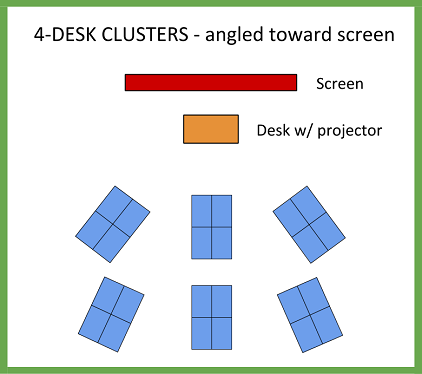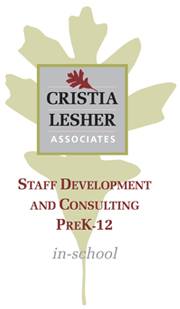Getting Organized for Success with Math Manipulatives: Desks (Part 1 of 5)
Date: April 5th, 2016
By: Tom Schersten

When I teach math with manipulatives I have to be extremely organized, or I’m inviting a perfect storm. How I set up my classroom and manage materials are absolutely central to a lesson’s success. On the flip side, no matter how inspiring a lesson might be, poor logistics will derail it every time. The logistics of using manipulatives is both an art and a science, and I have been studying it and teaching it to others for many years.
(In two previous blogs I discussed the critical issues around managing behaviors when teaching with manipulatives. See Part 1 and Part 2.)
The key elements of organization when teaching with manipulatives are:
- Setting up the desks;
- Organizing the manipulatives in advance, passing them out, and getting them back;
- Using a projector, document camera, or ELMO to make all your instruction crystal clear;
- Giving each student ‘lesson mats’ (which you have made in advance on your computer and printed out) to help them participate in their own learning and keep their learning space orderly;
- Introducing and leading the first lesson.
I will write a blog on each of these elements of organization.
This week I am writing about how I organize the desks for instruction with manipulatives.
SETTING UP THE DESKS
While sometimes math lessons with manipulatives for kindergarteners or first graders are best conducted with the class in a big circle on the floor, most of the time lessons are conducted with students at desks.
Not just any arrangement of desks will do. I want students to be able to:
- See the screen where I’ll be projecting my instruction;
- Work in pairs sometimes and groups of 4 sometimes;
- Share materials.
What has proven most efficient during my teaching has been to seat students in groups of 4 kids with 2 desks facing 2 desks, side-by-side, forming a rectangle. In this arrangement I can pair kids up with the person to the side or with the person who is straight ahead. I call these the “shoulder partner” and the “face partner” respectively.
I am careful to set up these desk clusters of 4 desks so that everyone can see the screen I’ll be using for projection. The desk cluster directly in front of the screen will be oriented so that all 4 students will be turning their heads 90 degrees to the right or 90 degrees to the left to see the screen. No one needs to turn further than 90 degrees to see the screen because the midline of this 4-desk cluster is pointing toward the middle of the screen to be observed.
When 4-desk clusters are not directly in front of the screen, but rather looking at an angle toward the screen, I set up the midline of the cluster so that it is again pointing toward the middle of the screen to be observed, so that all 4 students will be turning their heads 90 degrees to the right or 90 degrees to the left to see the screen. This arrangement does not look like a rectangular grid with reflective symmetry; rather it looks more like the fanning out of rotational symmetry.
It is important that all students can easily see the visual images projected onto the screen, showing what the teacher is doing with manipulatives and/or recording with symbols. The last thing you want is for students to have difficulty seeing the the critical math modeling you will be presenting on the screen.
Here’s what this arrangement of desks looks like:

Final tip about desks: Sometimes I put a large piece of paper or card stock, say 11” x 14,” on top of the intersection of the four desks. That way, when I deliver manipulatives to each 4-desk cluster at the beginning of the lesson, no manipulatives slip through the space between the four desks and onto the floor.
Next blog: Organizing the manipulatives in advance, passing them out, and getting them back.
Meanwhile, if you have feedback, questions, or suggestions for future blogs, I’d love to hear from you at [email protected]. I answer all my emails.

